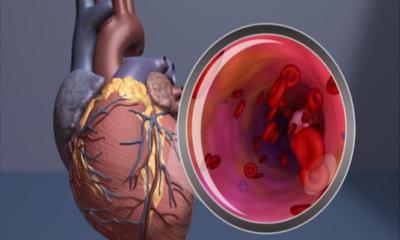Now is the time to pool knowledge
Cooperation between the individual diagnostic fields of radiology, pathology and laboratory medicine has increased in daily clinical routine over the last few years. To a large extent, the three disciplines are faced with the same requirements and problems.

They are interdisciplinary specialties that must satisfy the requirements of their clinical colleagues through the provision of diagnostic procedures, and they are present at almost all tumour conferences.
Digitisation facilitates an exchange of data to obtain second opinions as well as teleradiology and telepathology. European Hospital asked Dr Gabriel Krestin, Professor of Radiology and Chairman of the Department of Radiology at Erasmus Medical Centre in Rotterdam and Past-President of the European Society of Radiology (ESR), whether now is also time for the individual European specialist medical societies to close ranks.
Prof. Krestin believes there has been stronger strategic cooperation between individual diagnostic disciplines for some years, beginning in the USA. This cooperation has a substantial as well as political level: ‘Driven by technological developments, diagnostics has become increasingly complex, which leads to a situation where the requesting medical disciplines can no longer keep up with developments and lose their overview. Therefore, it would certainly benefit all sides if the diagnostic disciplines act together and pool their knowledge.’ he explains.
‘This movement towards integrated diagnostics was already discused two years ago at the International Society for Strategic Studies in Radiology (ISSSR) symposium – incidentally with strong support from the industry itself.
‘In the USA, such diagnostic units are already a reality, and at Rotterdam’s Erasmus Medical Centre all diagnostic disciplines are combined in a joint cluster for “Diagnostics and Advice”.’
One factor that favours this development is the shift in imaging from an interpretative modality towards quantitative science. ‘We measure a growing number of details in images and can even show diseases in concrete numbers; we talk of imaging biomarkers, a term that goes to show that we are becoming increasingly similar to laboratory chemists.’
The conclusion of this integration of diagnostic disciplines could have a single endpoint, a front office for all diagnostic questions arising among clinicians. The objective is a simplification of the process and a gain of time and resources: the clinician does not have to proceed step by step and work from discipline to discipline but receives a single answer and recommendation from the combined diagnostic profession for his patient.
In Rotterdam the emphasis is on the advisory function for clinical colleagues, for primary diagnostics as well as recommendations or therapy monitoring. ‘The organisational structures are there already, but the support from the IT department, which has to process large volumes of data in an efficient manner, is as yet lacking.’
Prof. Krestin also deems stronger cooperation sensible on a political level. Under his ESR presidency, bilateral talks with a large number of European specialist societies have indeed begun, and stronger cooperation on a political level was not only called for but also implemented.
One of the first success stories of this cooperation between many individual specialist societies was the Alliance for MRI on the EMF guidelines. ‘But there are, of course, more levels of cooperation,’ he pointed out. ‘In July, representatives of ten European specialist societies came together, including radiologists, pathologists, radiotherapists, anaesthetists and surgeons, to discuss the formation of a joint organisation, enabling them to talk to the European Union and the industry with one voice,’ he explained. Two political organisational models are conceivable – either an entirely new alliance will form or the Alliance for Biomedical Research, which was set up two years ago and comprised of 21 specialist societies, initially formed to have an impact on EU science policies – will extend its focus to political matters.
In any case, the need for action for this political representation of interests is extensive, ranging from European legislation on the subject of clinical trials, for instance, to professional qualifications, data privacy and code of conduct for a clear regulation of relationships with the industry. Individual diagnostic disciplines are also due to find common ground on questions of education and training. Although joint training events now exist for assistants, in the future, individual diagnostic disciplines could still learn more from one another and move away from approaching problems based only on their own specialist perspective. ‘Pathological and radiological interrelations have existed for a long time; as radiologists we always look for correlations with pathology in our images. However,’ Prof. Krestin concludes, ‘whether or not all three diagnostic disciplines will be combined into one joint diagnostic profession remains to be seen.’
Profile:
Professor Gabriel Krestin, Head of Radiology in one of Europe’s biggest hospitals, the Erasmus Medical Centre in the Netherlands, is also Past President of the European Society of Radiology (ESR) and founder of the European Institute for Biomedical Imaging Research (EIBIR). He graduated at the Medical Faculty at the University of Cologne, Germany,
where he completed his radiology residency and doctoral thesis and then appointed head of the MRI Centre at University Hospital in Zurich, Switzerland. From October 1995 to May ’97 he was acting chairman of the Department of Diagnostic Radiology in Zurich before moving to his present position in the Netherlands. He has also served as a permanent visiting Professor at Stanford University USA, since 1998.
29.10.2013











